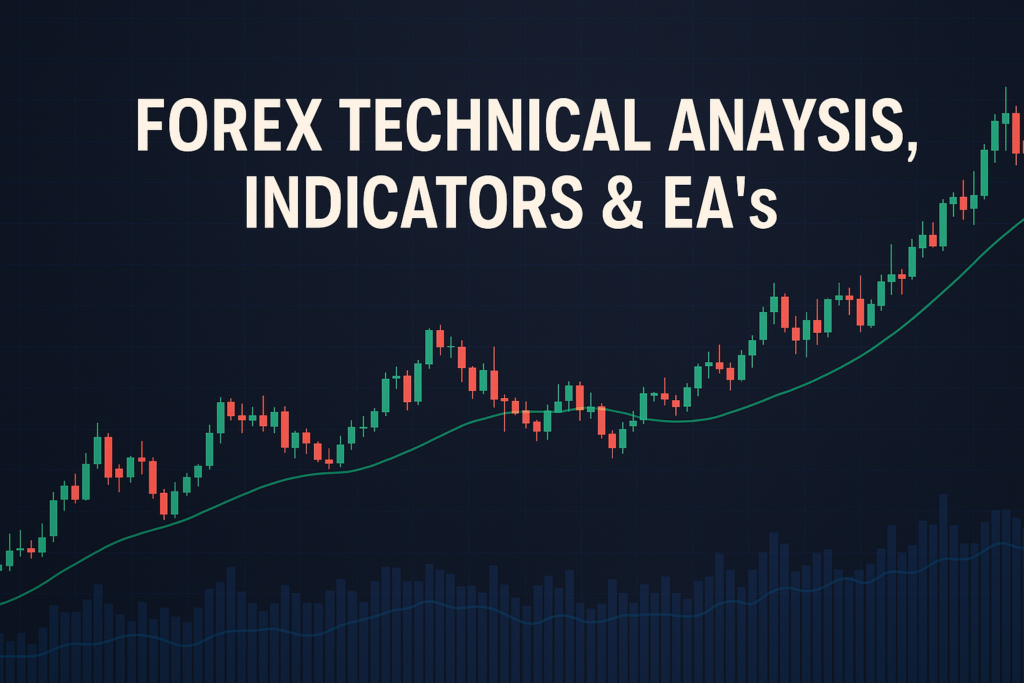
Alligator: A powerful tool for Forex traders to identify trends and optimize trading strategies.
The alligator is a popular trading tool in Forex that many traders use to help them identify trends and make informed decisions. It was created by Bill Williams, who wanted to simplify the trading process and help traders understand market movements better. The alligator consists of three moving averages that resemble the jaws, teeth, and lips of an alligator, which is why it got its name.
However, many traders, both beginners and professionals, often struggle with effectively using the alligator indicator. They might find it confusing or fail to grasp how it fits into their overall trading strategy. Understanding the alligator is crucial for making profitable trades and avoiding unnecessary losses.
This article will explore the alligator indicator, its history, advantages, and disadvantages, as well as strategies for effectively using it in Forex trading.
One common issue that traders face is order execution failure. This can lead to missed opportunities and unexpected losses if not addressed properly.
What is an Alligator?
What is an Alligator?
The alligator indicator is a technical analysis tool that helps traders identify trends in the Forex market. Think of it as a guide that shows you when to enter or exit a trade. It uses three different moving averages that represent different timeframes. These moving averages are called the “jaws,” “teeth,” and “lips” of the alligator. When these lines are spread apart, it indicates a strong trend, while they close together suggests a ranging market.
Types of Alligator
There are various types of alligator indicators, including:
- Simple Moving Average (SMA): This is the most basic type and is easy to understand.
- Exponential Moving Average (EMA): This type gives more weight to recent prices and reacts more quickly to price changes.
- Weighted Moving Average (WMA): This type also focuses on recent prices but does so in a slightly different way.
How Alligator Smooths Out Price Action
The alligator indicator smooths out price action by averaging the prices over a certain number of periods. This helps traders see the bigger picture and ignore short-term noise. For instance, if the price is bouncing up and down, the alligator can help you identify the overall trend direction, making it easier to make decisions.
Common Periods Used and Why
Traders typically use periods like 5, 8, and 13 for the alligator indicator. These periods are chosen because they align with natural cycles in the market. By adjusting these periods, traders can tailor the alligator to fit different trading styles, whether they prefer short-term or long-term trades.
The History of Alligator: How It Became Popular
Origin of Alligator
The alligator indicator was created by Bill Williams in the early 1990s. Williams was a trader and psychologist who wanted to help others understand market dynamics better. He believed that many traders were losing money because they were not aware of market trends. The alligator was designed to provide clarity in trading decisions.
When Did Traders Start Using It Widely?
As the Forex market evolved, traders began to notice the benefits of the alligator indicator. By the late 1990s, more traders started to adopt it, leading to its rise in popularity. Today, it’s a common tool used by both beginners and experienced traders.
Real-Life Stories
Many professional traders have shared stories of how the alligator indicator helped them make profitable trades. For example, a trader noticed a strong trend when the alligator lines spread apart, allowing them to enter a trade early and ride the trend for significant profits. These real-life successes have encouraged more traders to incorporate the alligator into their strategies.
Advantages and Disadvantages of Alligator
Advantages:
- Helps Identify Trends Easily: The alligator indicator makes it simple to see when a trend is starting or ending.
- Useful for Dynamic Support and Resistance: The alligator can act as a dynamic support and resistance level, helping traders make better decisions.
- Works Well for Crossover Strategies: The indicator can help identify crossover points, which are often good entry and exit points for trades.
Disadvantages:
- lags Behind Price Movements: Because it uses moving averages, the alligator can lag behind current price movements, which might cause missed opportunities.
- Can Give False Signals in Sideways Markets: In choppy markets, the alligator might produce false signals, leading to losing trades.
How to Apply Alligator on MT4 & MT5
Step-by-Step Guide to Adding Alligator on Charts
To add the alligator indicator on your MT4 or MT5 platform, follow these simple steps:
- Open your trading platform and select the chart you want to analyze.
- Go to the “Insert” menu and click on “Indicators.”
- Choose “Bill Williams” and then select “Alligator.”
Customizing Alligator Settings
Once you have added the alligator indicator, you can customize its settings. You can change the periods for the jaws, teeth, and lips, as well as adjust the colors to your preference. This helps you see the indicator more clearly on your chart.
Saving Templates for Easy Application
After customizing the alligator indicator, you can save it as a template. This makes it easy to apply the same settings to other charts in the future. Just right-click on your chart, choose “Template,” and then select “Save Template.”
5 to 7 Trading Strategies Using Only Alligator
All Time Frame Strategy (M5 to D1)
This strategy works across all time frames. It involves looking for the alligator lines to open wide, indicating a strong trend. When the price is above the alligator, it’s a buy signal; when it’s below, it’s a sell signal.
Trending Strategies
In a trending market, traders should look for the alligator to confirm the direction of the trend. If the alligator lines are aligned in the same direction, it’s a good time to enter a trade in that direction.
Counter Trade Strategies
This strategy involves trading against the trend. When the alligator indicates that the trend is strong, traders should look for signs of reversal. This can be risky but may lead to high rewards.
Swing Trades Strategies
Swing traders can use the alligator to identify potential reversal points. When the alligator lines are close together and the price touches them, it may signal a good time to enter a trade.
5 to 7 Trading Strategies Combining Alligator with Other Indicators
All Time Frame Strategy (M5 to D1)
Combine the alligator with a Relative Strength Index (RSI) to confirm entry points. When the alligator indicates a trend and the RSI is overbought or oversold, it can provide a higher probability trade.
Trending Strategies
Use the alligator in conjunction with moving averages. When the moving averages align with the alligator, it strengthens the trend confirmation, making it a solid entry point.
Counter Trade Strategies
This strategy combines the alligator with Bollinger Bands. When the price hits the upper or lower band while the alligator indicates a strong trend, it may signal a reversal opportunity.
Swing Trades Strategies
Combine the alligator with Fibonacci retracement levels. When the price retraces to a Fibonacci level and the alligator lines are close, it may indicate a good swing trade entry.
One common challenge traders face is a big movement. These sudden price changes can be intimidating, but using the alligator can help manage entry and exit points effectively.
Top 10 FAQs About Alligator
1. What is the alligator indicator used for?
The alligator indicator helps traders identify trends and potential entry and exit points in the Forex market.
2. How do I set up the alligator indicator?
You can set up the alligator by adding it through the indicators menu in your trading platform.
3. What are the main components of the alligator?
The alligator consists of three moving averages: jaws, teeth, and lips.
4. Can the alligator be used in any market condition?
While the alligator works best in trending markets, it can give false signals in sideways markets.
5. What are the advantages of using the alligator?
It helps identify trends, provides dynamic support and resistance, and works well for crossover strategies.
6. What are the disadvantages of using the alligator?
It can lag behind price movements and may give false signals in choppy markets.
7. How can I combine the alligator with other indicators?
You can combine the alligator with indicators like RSI, moving averages, or Bollinger Bands to enhance trading strategies.
8. Is the alligator suitable for beginners?
Yes, the alligator is user-friendly and can be a great tool for beginners to learn about trends.
9. How can I optimize my alligator settings?
Experiment with different periods for the jaws, teeth, and lips to find what works best for your trading style.
10. Should I rely solely on the alligator for trading decisions?
No, it’s important to use the alligator in conjunction with other analysis methods for better results.
Conclusion
In summary, the alligator indicator is an essential tool for Forex traders looking to identify trends and make informed decisions. By understanding its advantages and disadvantages, as well as implementing effective strategies, traders can enhance their trading experience.
Remember, it’s always best to test your strategies in a demo account before risking real money. As you gain experience, you can refine your approach and use the alligator to your advantage.
Want to level up your trading skills? Check out trusted insights from FRED (St. Louis Fed), Reuters
Expand Your Knowledge
- 📌 Forex Trading Learning Road Map
- 📌 Forex Trading Course with no Fees
- 📌 Forex Trading Issues, Problems, and Solutions
- 📌 Forex Daily Forecast & Live Updates
- 📌 Forex Fundamental & News Analysis: Tomorrow’s Market Movers & Trade Opportunities
- 📌 Forex Education Hub: Learn & Profit
- 📌 Forex Technical Analysis, Indicators & EA’s
Start Trading Today
Ready to take your forex trading to the next level? Open an account with Exness, one of the most trusted platforms in the industry. 👉 Sign Up Now and trade with confidence!
My recommended broker stands out with ultra-low spreads for beginners, instant withdrawals, and zero spread accounts for pro traders.
Trusted since 2008, lightning-fast execution, no hidden fees, and a secure, transparent trading environment—giving you the edge you need to succeed. 🚀
Watch this helpful video to better understand alligator:
Note: The video above is embedded from YouTube and is the property of its original creator. We do not own or take responsibility for the content or opinions expressed in the video.
In this video, the presenter introduces a unique approach to using the Williams Alligator indicator, which is designed to help traders identify market trends and ranges. The Alligator indicator consists of three smoothed moving averages that represent an alligator’s mouth: the green line (lips), the red line (teeth), and the blue line (jaw). The presenter emphasizes that while the market trends only 15-30% of the time, it spends the majority of its time ranging, leading to potential losses for traders. Hence, recognizing when the market is trending or stuck in a range is crucial for successful trading. The Alligator indicator helps with this by showing when the lines are close together, indicating a range, and when they spread apart, indicating a strong trend.
Instead of relying on the classic crossover strategy, which can result in late entries and missed opportunities, the presenter suggests a more proactive method. Traders should observe the position of the green line (lips) in relation to the other two lines and take action based on the closing prices of candles. If the lips are above the other lines and a candle closes below the teeth, a short position is warranted, while a long position is indicated when the lips are below the lines and a candle closes above the teeth. Additionally, combining the Alligator indicator with the 200 EMA can help traders align their trades with the overall market trend, enhancing their chances of success. This comprehensive approach aids traders in making timely decisions, maximizing profits, and minimizing losses.
When it comes to Forex trading, understanding the dynamics of the market is essential for success. Traders often seek reliable indicators and strategies to navigate the complexities of currency trading. For those interested in mastering the Forex market, particularly in the context of the U.S. market, it’s crucial to be informed about different trading techniques and tools available. To learn more about effective strategies in Forex trading, check out our guide on us forex for essential tips and insights. Understanding these elements can significantly improve your trading performance and outcomes in the Forex landscape.



